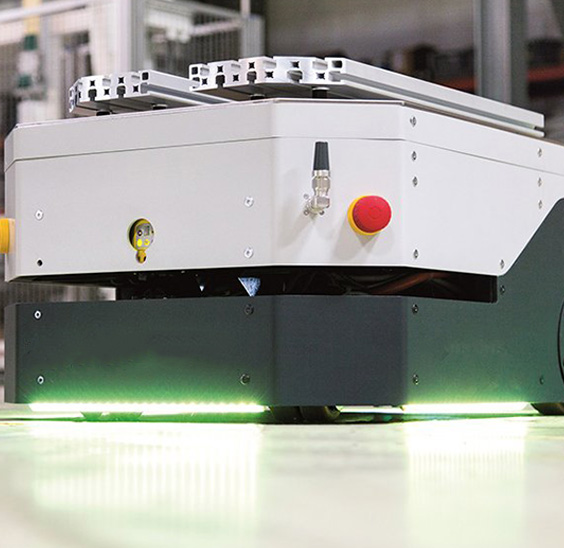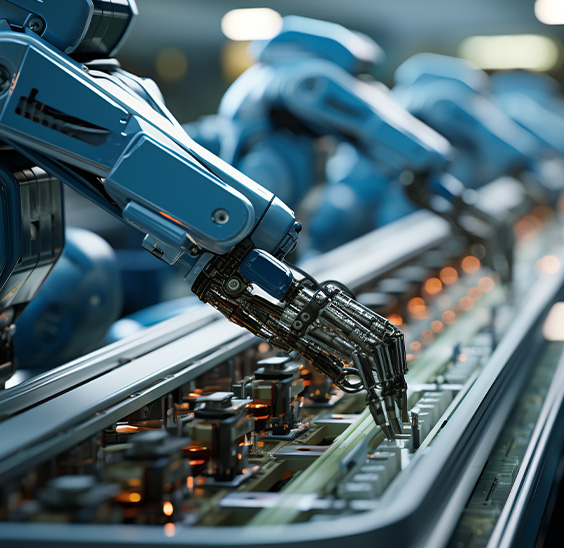Harmonic reducer: the core driving force of the industrial revolution
In the modern industrial field, harmonic reducers have become an indispensable key component. From robots to aerospace, from precision machinery to photovoltaic equipment, harmonic reducers are driving the rapid development of industrial automation and intelligence with their excellent performance and wide application scenarios.
Harmonic reducer is a precision gear mechanism based on the principle of elastic deformation. Its core components include wave generator, flexible wheel and rigid wheel. When the wave generator rotates, the flexible wheel meshes with the rigid wheel through elastic deformation to achieve the deceleration effect. This design makes the harmonic reducer have the characteristics of small size, light weight, large transmission ratio and high transmission efficiency.
Compared with traditional gear reducers, the structure of harmonic reducers is simpler, consisting of only three basic components, and it is easy to install. The axial coaxial design further improves its applicability. Due to the uniform radial movement of the flexible wheel, its relative sliding speed is extremely low, so the wear is small and the efficiency is as high as 69% to 96%.
Harmonic reducers are known for their high transmission efficiency and high precision. Its transmission efficiency can reach 96%, and due to the radial motion characteristics of the flexible wheel, it can achieve a smooth transmission process with reduced vibration and noise. This high efficiency and high precision make it an ideal choice for fields such as robot joints, CNC machine tools and precision positioning systems.
Another major advantage of harmonic reducers is their small size and light weight. This feature enables them to play an important role in applications with limited space, such as robot arms and semiconductor equipment. Its compact design also reduces manufacturing costs and maintenance difficulties.
Harmonic reducers have high torque density and can transmit large torque in a limited space. This feature makes them excel in scenarios that require high torque output, such as industrial robots and precision machinery.
The design of harmonic reducers focuses on durability and low maintenance. Its precision engineering and the application of high-quality materials extend its service life and reduce the frequency of replacement and related material waste.
In the field of industrial robots, harmonic reducers are the core components of joint transmission systems. It not only improves the robot's motion accuracy and speed, but also significantly improves production efficiency. For example, in collaborative robots, harmonic reducers ensure efficient completion of tasks by accurately controlling the motion trajectory.
In the aerospace field, harmonic reducers are favored for their high reliability and long life. For example, in the satellite antenna drive mechanism, the harmonic reducer has been tested in a vacuum high and low temperature environment, proving that it can operate stably under extreme conditions.
In the field of photovoltaic equipment and semiconductor manufacturing, the harmonic reducer ensures the efficient operation and long-term stability of the equipment with its high precision and low noise characteristics.
In medical equipment and precision instruments, the application of harmonic reducers further improves the performance and reliability of the equipment. For example, in microscopes and optical instruments, harmonic reducers ensure the accuracy of experimental data by precisely controlling movement.
With the continuous advancement of science and technology, the performance and application range of harmonic reducers will be further expanded.
Intelligence and digitalization
With the development of artificial intelligence and Internet of Things technology, harmonic reducers will gradually realize intelligent control and remote monitoring. For example, predict equipment failures through data analysis and perform maintenance in advance.
Green manufacturing and sustainable development
The low maintenance and long life characteristics of harmonic reducers make them an important part of green manufacturing. In the future, more companies will adopt environmentally friendly materials and technologies to further reduce resource waste.
Application of high-performance materials
With the development of new material technology, harmonic reducers will use higher-performance materials to meet the needs of higher load capacity and more complex application scenarios.
Miniaturization and integration
With the advancement of miniaturization technology, new products such as short-tube harmonic reducers will gradually enter the market to meet the needs of miniaturized equipment.


 EN
EN  English
English 中文简体
中文简体 русский
русский Español
Español


















